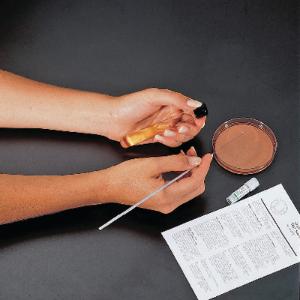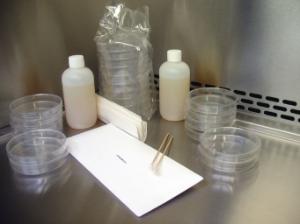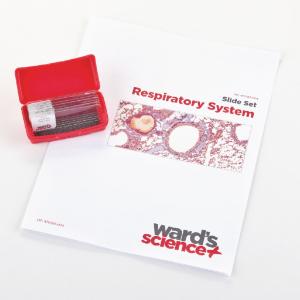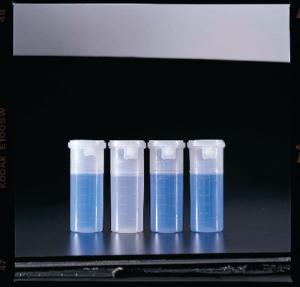How a face mask a day helps keep germs at bay; download the activities
Middle & High School
Health experts at the Centers for Disease Control and Prevention (CDC) and the World Health Organization (WHO) say the evidence is clear that masks can help prevent the spread of COVID-19 and other airborne pathogens; the more people wear masks, the better.
The curious minds in your classroom will be fascinated to learn how masks work to help keep disease- or bacteria-carrying respiratory droplets at bay. Using lessons about respiratory transmission from real-life diseases can encourage your students to consider STEM career options in public health or other health-related fields.
The downloadable activities below helps students practice investigating, identifying trends, and decision-making while learning core concepts in epidemiology and other STEM disciplines.
To understand how masks work, we must understand a little about respiratory emissions first.
Respiratory droplets - why size matters
In the 1930s, William F. Wells was the first to categorize respiratory droplet emissions into "large" and "small" droplets. Large vs. small may not sound like a big deal, but categorizing droplets is crucial for health officials to respond to certain diseases, like COVID-19.
Large droplets settle faster than they evaporate, contaminating the immediate vicinity of the infected individual. In contrast, small droplets evaporate faster than they settle. As small droplets move from the warm and moist conditions of the respiratory system to the colder and drier outside environment, they evaporate and form residual particulates made of the dried material from the original droplets. These residual particulates are called droplet nuclei or aerosols.
We sometimes hear public health experts classifying large vs. small droplets as droplets vs. aerosol while discussing their impact on transmitting respiratory disease. Experts base their Infection control strategies on whether a respiratory disease is transmitted via the large or the small droplet route. In short, size matters!
How do masks help contain droplets and aerosols?
Face masks have always been a normal part of PPE for healthcare professionals, and now cloth masks are advised for the general public during the COVID-19 pandemic. So, why does this light piece of PPE carry such a heavy load?
This video shows an agar demonstration of bacteria from respiratory droplets and the ability of masks to block them. Another experiment using laser light scattering found that researchers generate hundreds of droplets ranging from 20 to 500 micrometers when saying a simple phrase. However, nearly all these droplets were blocked when they covered their mouth with a damp washcloth. Other studies of people with the flu or common cold make it clear that masks can significantly reduce the amount of respiratory viruses emitted in droplets and aerosols.1
Although viral particles are extremely tiny, most of these organisms first leave the mouth and nose in much larger droplets, especially when coughing or sneezing. They get smaller when they evaporate once they move away from the body. So, it makes sense that trapping these larger droplets with the mask means not nearly as many viral particles escape. If two people wear masks, the viral particles can travel about 5 feet away from each individual. When an infected person is not wearing a mask, those particles can float through the air 30 feet or more and stay alive for up to 30 hours.2
Most evidence shows masks work best by preventing large droplets from escaping the source and evaporating into smaller droplets that can travel farther. But there is mounting evidence showing different masks can block particles from getting in, to varying degrees.
After their lessons, the students in your class can impress their friends by explaining how N95 masks block the tiniest aerosols and why that's important to healthcare workers. They can explain that once the particles are up to 5 microns in size, most fabric masks block about 80%. Years later, nobody will be surprised when your students take their place in the annals of scientific and public health history; well, all great contributors started somewhere, didn't they?
So, during a pandemic like COVID-19, mask up and remember the "Three W's:" wear a mask, wash your hands, and watch your distance.
Downloadable Activities
- How well does a cloth cover stop sprayed droplets? Download lesson
- How many germ-carrying droplets can cross cloth? Download lesson
References: 1. Nature Medicine: Respiratory virus shedding in exhaled breath and efficacy of face masks; April 2020
2. Stanford scientists on COVID-19 mask guidelines; June 2020.
Recommended products:
[StartProductBlock]

Ward's® Gram Stain Bacterial Suspension Kit
Students culture both a Gram-positive rod and a Gram-negative rod in preparation for staining. It comes with a freeze-dried mixed culture of Bacillus, culture materials, and instructions.
[EndProductBlock]
[StartProductBlock]

Microbiology Experiment Kit
How Clean is your Lab Station? Test for the presence of bacteria in your workspace before and after cleaning with this TSA Microbiology Experiment Kit.
[EndProductBlock]
[StartProductBlock]

Respiratory System Slide Set
Major organs and tissues involved in gaseous exchange. Identifying features clearly distinguishable.
[EndProductBlock]
[StartProductBlock]

Ward's® Simulated Disease Transmission Lab Activity
Students find that disease can be spread through the exchange of bodily fluids. Students simulate the transmission of disease, identify the original disease carrier in the class population, and trace the route of transmission while they use two important Framework Standards: LS3 and ETS1.
[EndProductBlock]
